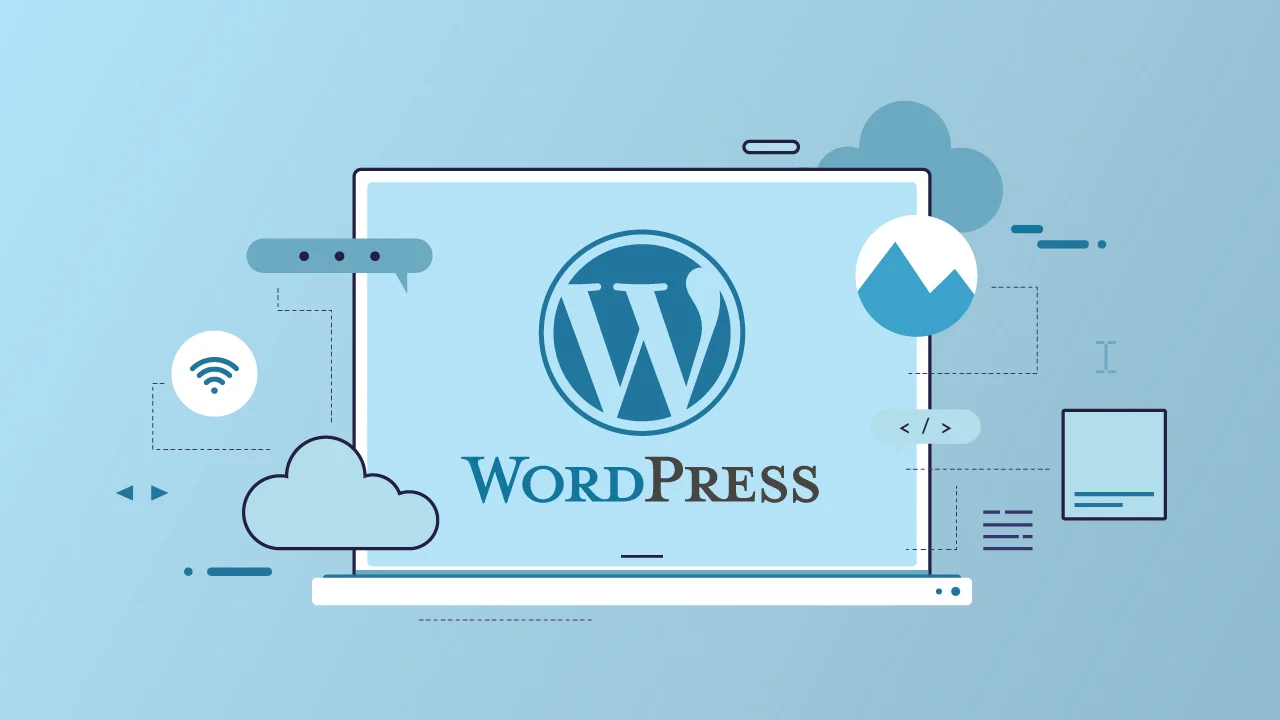Despite being a popular CMS, many website owners underestimate the importance and costs associated with keeping their WordPress sites running smoothly, securely, and efficiently.
Before we look at the costs of different WordPress maintenance services, let’s talk about what it can cost you if you don’t have any maintenance package at all.
The Cost of Not Having a WordPress Maintenance Plan
While some may view maintenance as an unnecessary expense, the cost of neglecting your WordPress site can be far greater. Consider the potential consequences:
- Security breaches: Without regular updates and security measures, your site becomes vulnerable to attacks, potentially leading to data theft, reputational damage, and costly recovery processes.
- Downtime: An unmaintained site is more likely to crash or experience technical issues, resulting in lost traffic and revenue.
- Poor performance: Slow-loading pages and broken features can drive visitors away and negatively impact your search engine rankings.
- Compatibility issues: As WordPress, themes, and plugins evolve, an outdated site may suddenly stop functioning correctly, requiring expensive emergency fixes.
- Data loss: Without regular backups, you risk losing valuable content and customer data in case of a crash or hack.
These potential costs – both financial and reputational – often far outweigh the investment in a proper maintenance plan.
Understanding the various aspects of WordPress maintenance costs and other associated charges can help you budget effectively and make informed decisions about your website’s upkeep. This guide will break down the elements of WordPress maintenance, explore the factors that influence costs, and provide insights into different pricing models and service options available in the market.
Core Maintenance Tasks
Maintaining a WordPress website involves several critical tasks that should be performed regularly to ensure optimal performance, security, and functionality. Let’s explore these core maintenance tasks in detail:
- Patching security vulnerabilities
- Fixing bugs and improving functionality
- Ensuring compatibility with the latest web standards
- Installing and configuring a reputable security plugin
- Implementing strong password policies
- Using two-factor authentication where possible
- Regularly scanning for malware
- Monitoring for suspicious activity
- Keeping your SSL certificate up to date
- Full site backups (files and database)
- Storing backups in multiple locations (local and cloud)
- Automating the backup process
- Regularly testing backup restoration
- Maintaining different backup schedules (daily, weekly, monthly)
- Optimizing images and other media files
- Minifying CSS, JavaScript, and HTML
- Implementing caching solutions
- Cleaning up the database
- Monitoring and improving page load times
- Regularly checking for and fixing broken links
1. Regular Updates (WordPress core, themes, plugins)
WordPress, along with its themes and plugins, receives frequent updates. These updates are crucial for:
2. Security Measures
Protecting your WordPress site from threats is an ongoing process. Key security tasks include:
3. Backups
Regular backups are your safety net against data loss. A comprehensive backup strategy should have the following:
4. Performance Optimization
Keeping your site running smoothly and quickly is essential for user experience and SEO. Performance tasks are:
Each core maintenance task plays a vital role in keeping your WordPress site healthy, secure, and performing at its best. While the frequency of these tasks can vary based on your site’s complexity and traffic, they should all be part of your regular maintenance routine.
Factors Affecting WordPress Maintenance Costs
The cost of maintaining a WordPress website can vary significantly based on several factors. Understanding these can help you anticipate and budget for your maintenance needs more accurately.
- Larger websites with more pages require more time to update and maintain.
- Complex sites with intricate designs or functionality often need more specialized attention.
- E-commerce sites typically have higher maintenance costs due to additional security requirements and regular updates for payment gateways.
- High-traffic websites often require more robust hosting solutions and more frequent optimization.
- Sites with more visitors may need more frequent security scans and monitoring.
- Higher traffic can lead to more user-generated content that needs moderation.
- Each plugin and theme needs to be regularly updated and checked for compatibility.
- More plugins increase the likelihood of conflicts and security vulnerabilities.
- Some premium plugins and themes require annual license renewals, adding to overall costs.
- Custom-coded features often require specialized maintenance and updates.
- Third-party integrations (CRMs, payment systems, etc.) need regular checks to ensure continued compatibility.
- Custom features may break with WordPress core updates, requiring additional testing and potential fixes.
- Frequency of content updates: Sites that require frequent content changes may incur higher maintenance costs.
- Compliance requirements: Websites handling sensitive data (e.g., medical, financial) may need additional security measures, increasing maintenance costs.
- Geographic distribution of users: Sites serving a global audience may require more extensive performance optimization.
- Core Updates: Regular updates to the WordPress core to ensure you’re running the latest version of WordPress.
- Theme and Plugin Updates: Updating themes and plugins to their latest versions to maintain compatibility and security.
- Security Monitoring: Basic monitoring for security threats and vulnerabilities.
- Regular Backups: Scheduled backups of your website to prevent data loss.
- Performance Checks: Basic checks to ensure your website is running efficiently.
- Enhanced Security: More robust security measures, including malware scans and firewall setup.
- Performance Optimization: Regular optimization of website performance, including speed improvements and database optimization.
- SEO Maintenance: Basic SEO upkeep, such as fixing broken links and ensuring SEO best practices are followed.
- Content Updates: Assistance with updating website content, including blog posts and product pages.
- Monthly Reports: Detailed monthly reports on website performance, security, and updates.
- Custom Development: Access to development hours for custom features, bug fixes, and enhancements.
- Advanced Security: Comprehensive security measures, including advanced malware removal, DDoS protection, and security audits.
- Uptime Monitoring: Real-time monitoring of your site’s uptime to ensure it remains accessible.
- Staging Environment: Use of a staging site to test updates and changes before they go live.
- Priority Support: Priority access to support with faster response times and dedicated account managers.
- Comprehensive Analytics: In-depth analytics and reporting to help you understand your website’s performance and user behavior.
- Cost Savings: The most significant advantage of DIY maintenance is the potential for cost savings. You don’t have to pay for professional services, which can be a significant expense for some businesses.
- Control and Customization: Maintaining your site yourself gives you complete control over updates, changes, and customizations, ensuring everything is done to your specifications.
- Learning Opportunity: DIY maintenance offers a valuable learning experience, helping you to understand the intricacies of WordPress, which can be beneficial for troubleshooting and making future enhancements.
- Time-Consuming: WordPress maintenance can be time-consuming, especially if you lack experience. Tasks like updates, backups, and security checks can eat into time better spent on other business activities.
- Technical Challenges: Without sufficient technical knowledge, you may struggle with more complex tasks such as troubleshooting errors, optimizing performance, or implementing advanced security measures.
- Risk of Errors: Mistakes in maintenance tasks can lead to website downtime, data loss, or security vulnerabilities, which can negatively impact your business.
- Expertise and Experience: Professional WordPress development agency bring a wealth of expertise and experience, ensuring that all maintenance tasks are handled efficiently and effectively. They stay updated with the latest best practices and trends in WordPress management.
- Time Savings: Outsourcing maintenance frees up your time, allowing you to focus on your core business activities without worrying about the technical aspects of your website.
- Enhanced Security: Professionals implement robust security measures and monitor your site for potential threats, significantly reducing the risk of security breaches.
- Regular Updates and Backups: Professional services ensure that all updates and backups are performed regularly and correctly, minimizing the risk of compatibility issues and data loss.
- Performance Optimization: Professionals can optimize your site’s performance, improving load times and overall user experience, which can positively impact your SEO and customer satisfaction.
- Access to Advanced Tools: Professional services often have access to advanced tools and resources that can enhance your website’s functionality and performance.
- Direct Costs: Generally lower, as you don’t have to pay for professional services. However, you may need to invest in premium plugins, themes, and tools.
- Indirect Costs: Time spent on maintenance is time taken away from other business activities, which can have an opportunity cost. Additionally, mistakes can lead to downtime or security issues, which might incur costs to fix.
- Direct Costs: Typically range from $30 to $500+ per month, depending on the level of service and complexity of your website.
- Indirect Costs: Reduced risk of errors and downtime, potentially saving money in the long run. Improved performance and security can also lead to higher user satisfaction and potentially higher revenue.
- Basic Maintenance: DIY costs might include minimal plugin expenses and your time, while professional services may start at around $30 per month.
- Intermediate Maintenance: DIY costs increase with more plugins and tools, potentially adding up to $50-$100 per month, whereas professional services range from $75 to $150 per month.
- Advanced Maintenance: DIY efforts could require significant time investment and advanced tools costing $100+ per month, whereas professional services start at $150 and can go up to $500+ per month.
- Determine the number of pages, posts, and media files.
- Evaluate the complexity of your site’s structure and design.
- Analyze your website’s traffic patterns and peak usage times.
- Consider the number of active users and interaction levels.
- List out essential plugins and custom functionalities.
- Assess the importance of e-commerce capabilities, membership systems, or other special features.
- Estimate how often you update content, themes, and plugins.
- Consider whether your website requires frequent updates and backups.
- Evaluate the importance of security measures based on your website’s data sensitivity.
- Consider previous security incidents or known vulnerabilities.
- Compare the specific services included in each maintenance plan (e.g., backups, updates, security checks).
- Look for any additional services offered, such as custom development or SEO optimization.
- Check the level of customer support provided (e.g., 24/7 support, response times).
- Determine whether you will have a dedicated account manager or a general support team.
- Assess the provider’s experience with WordPress maintenance.
- Look for certifications, partnerships, or any recognition in the industry.
- Determine if the provider offers customizable maintenance plans tailored to your specific needs.
- Read reviews on third-party platforms such as Google Reviews, Trustpilot, or Clutch.
- Look for patterns in customer feedback, focusing on reliability, quality of service, and customer support.
- Review case studies or success stories provided by the service provider.
- Look for examples of how they have helped similar businesses or websites.
- Check discussions on social media platforms and forums for real-world experiences.
- Pay attention to any recurring issues or high praise mentioned by users.
- Analyze the cost of each maintenance plan in detail.
- Consider both upfront costs and any potential hidden fees.
- Evaluate the value of services included in the plan relative to your website’s needs.
- Assess whether the plan offers a good balance of essential services and additional benefits.
- Consider the potential ROI of a maintenance plan in terms of improved website performance, security, and user experience.
- Think about the potential cost savings from preventing downtime, data loss, or security breaches.
- Look for providers that offer trial periods or money-back guarantees.
- Use these opportunities to test the service and ensure it meets your expectations.
- Keep Plugins and Themes Updated: Regular updates ensure compatibility with the latest WordPress version and reduce security risks.
- Remove Unused Plugins and Themes: Deactivate and delete plugins and themes that are not in use to streamline your site and reduce potential vulnerabilities.
- Choose a Quality Hosting Provider: Invest in reliable hosting services known for excellent uptime, speed, and customer support.
- Consider Managed WordPress Hosting: Managed hosting providers often include maintenance tasks such as updates and backups, reducing your workload and potential costs.
- Install Security Plugins: Use reputable security plugins to monitor and protect your site against malware, brute force attacks, and other threats.
- Enable HTTPS: Secure your site with HTTPS to encrypt data and build trust with visitors.
- Use Strong Passwords: Implement strong passwords and consider two-factor authentication (2FA) for added security.
- Create a Maintenance Schedule: Regularly schedule updates for WordPress core, plugins, and themes to ensure they remain secure and functional.
- Perform Regular Backups: Backup your website regularly to safeguard against data loss in case of security breaches or technical failures.
- Conduct Performance Checks: Monitor your site’s performance metrics to identify and address issues that could impact user experience and SEO.
1. Website Size and Complexity
Impact on cost: Larger, more complex sites generally incur higher maintenance costs due to increased time and expertise required.
2. Traffic Volume
Impact on cost: Higher traffic volumes typically lead to increased maintenance costs, particularly in areas of performance optimization and security.
3. Number of Plugins and Themes
Impact on cost: A higher number of plugins and themes generally increases maintenance time and potential for issues, thus raising costs.
4. Custom Features and Integrations
Impact on cost: Websites with extensive custom features or integrations typically have higher maintenance costs due to the specialized knowledge required.
5. Additional Factors to Consider:
Breakdown of Typical WordPress Maintenance Costs
When planning your WordPress maintenance budget, it’s essential to understand the range of costs involved and what each package typically includes. Here, we break down the typical costs for basic, intermediate, and advanced maintenance packages, as well as additional costs for specific services.
1. Basic Maintenance Packages
- Cost: $30 – $75 per month
Basic maintenance packages cover the essential upkeep tasks necessary to keep your WordPress site running smoothly. These packages typically include:
Basic packages are suitable for small websites or blogs with minimal traffic and straightforward functionality.
2. Intermediate Maintenance Packages
- Cost: $75 – $150 per month
Intermediate maintenance packages offer a more comprehensive set of services to cater to growing websites or businesses with more traffic and complex needs. These packages typically include everything in the basic package, plus:
Intermediate packages are ideal for businesses that require regular updates and enhanced security features.
3. Advanced or Premium Maintenance Packages
- Cost: $150 – $500+ per month
Advanced or premium maintenance packages provide top-tier support and a wide range of services, perfect for large businesses or e-commerce sites with significant traffic and complex functionalities. These packages include everything in the intermediate package, plus:
DIY vs. Professional Maintenance Services
Maintaining your WordPress site involves a choice between handling the tasks yourself (DIY) or hiring a professional WordPress maintenance service. Each approach has its pros and cons, benefits, and cost implications.
1. Pros and Cons of Maintaining Your Site Yourself
- Pros
Cons
2. Benefits of Hiring a Professional Service
3. Cost Comparison Between DIY and Professional Maintenance
DIY Maintenance:
Professional Maintenance:
Cost Comparison:
How to Choose the Right WordPress Maintenance Plan
Choosing the right WordPress maintenance plan is important to ensure your website remains secure, functional, and optimized. Here’s how to evaluate and select the best plan for your needs:
Assessing Your Website’s Needs
-
1. Website Size and Complexity:
2. Traffic and Usage:
3. Functionality and Features:
4. Update Frequency:
5. Security Needs:
Comparing Different Service Providers
-
1. Service Offerings:
2. Support Availability:
3. Experience and Expertise:
4. Customization Options:
Reading Reviews and Testimonials
-
1. Customer Feedback:
2. Case Studies and Success Stories:
3. Social Media and Forums:
Evaluating Cost vs. Value
-
1. Cost Breakdown:
2. Service Value:
3. Return on Investment (ROI):
4. Trial Periods and Money-Back Guarantees:
Tips to Reduce Maintenance Costs
Managing WordPress maintenance effectively can help minimize costs while ensuring your site remains secure and optimized. Here are practical tips to reduce maintenance expenses:
1. Regularly Updating and Cleaning Up Plugins and Themes
2. Using Efficient and Reliable Hosting Services
3. Implementing Good Security Practices
4. Scheduling Routine Check-Ups and Updates
Investing in a good maintenance plan for your WordPress site is essential for ensuring security, optimizing performance, and saving time and resources. It provides peace of mind knowing your site is protected, allowing you to focus on growing your business without technical worries.





